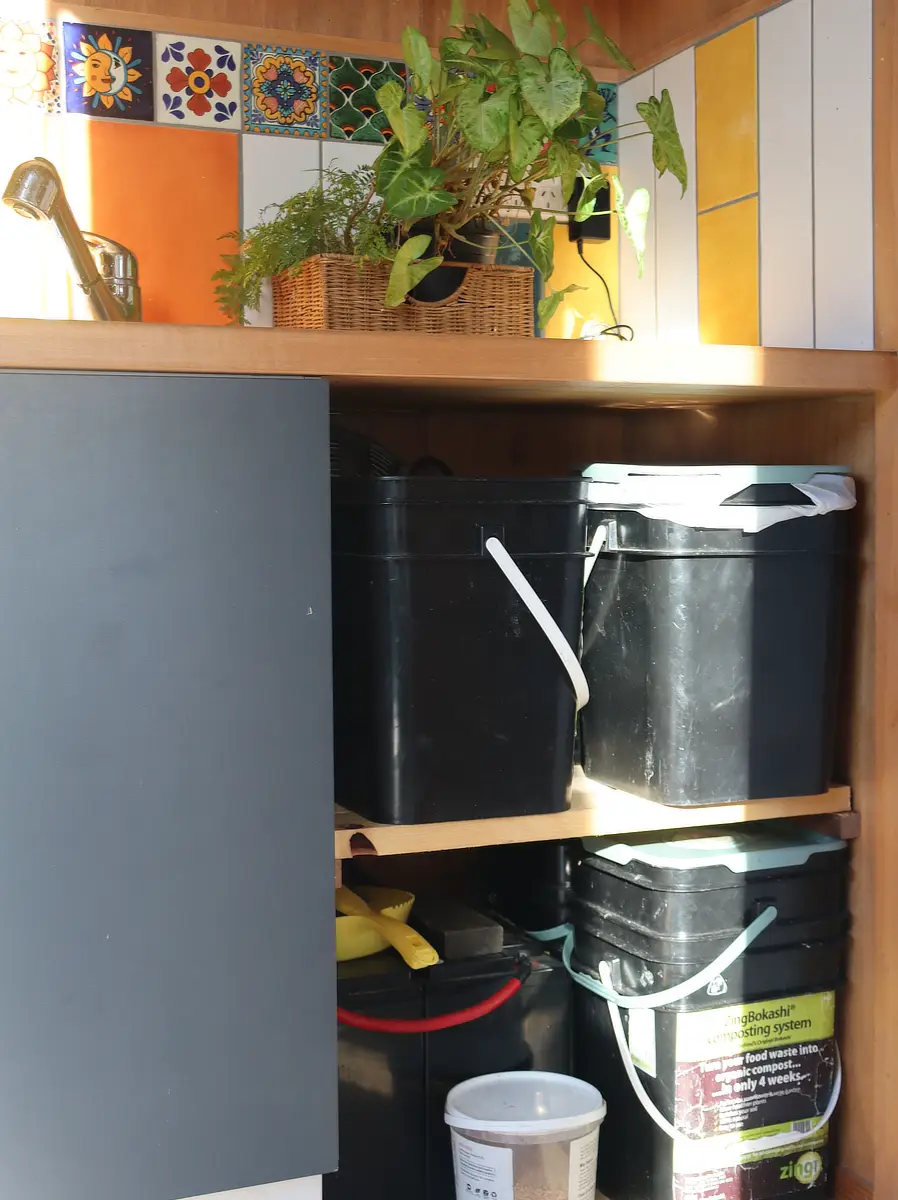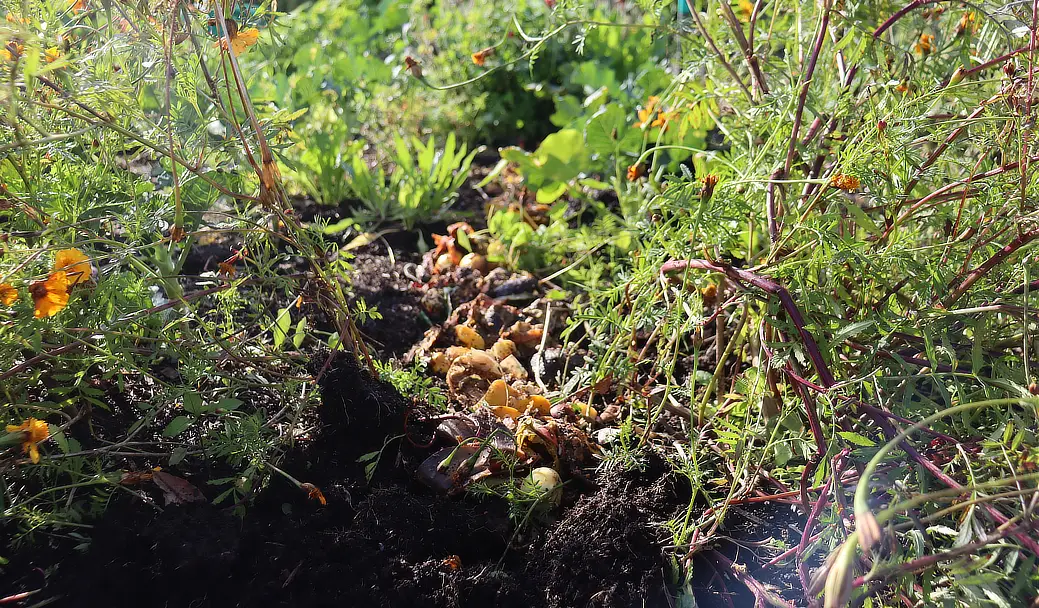
Greenies on the road: Managing food scraps
Kath Irvine
Last year in December, we sold up and hit the road in our Hino housetruck — a sharp learning curve and lots of broken crockery! but we’re loving it. The only thing I miss is the fresh herbs and vegies from my garden and the ease of recycling our food scraps.
I’ve been turning our food scraps into compost for many a year now, and there’s no way I’m sending them to the landfill now. We chose to use bokashi buckets in our housetruck, as we already had them. A worm farm could also work, though bokashi is possibly more forgiving and takes all food waste — bones and shells included.

Bokashi buckets, are a 2 bucket system — one sitting inside the other. The food scraps go into the top bucket and are sprinkled with a special brew called compost zing. This looks like sawdust and is full of beneficial microbes that facilitate fermentation. The liquid drips into the bottom bucket, providing a power juice, full of microbes to pour on your crops.
You need at least 2 sets because when one is full, it needs to sit and ferment for 10–14 days before using. Bokashi buckets are readily available to buy, but you can easily make them. All you need is 2 buckets the same size. Drill small holes all over the bottom of one bucket and sit it inside the other. The key factor is a sealed lid for the top bucket. The seal is important because like all fermentation, success relies on the exclusion of air. Put the buckets somewhere undercover, not too cold and out of direct sunlight (a little morning or afternoon sun is fine). There is no smell when the lid is on. And when you lift the lid, it smells like pickles. Rather than opening the bokashi every time you have food scraps, collect them in a small container and add them at the end of day.
Start off by sprinkling a dusting of compost zing in the bottom of the top bucket and add your first lot of food scraps. Push them down firmly to exclude air (a potato masher is good for the squeamish), then sprinkle another dusting of compost zing on top. The zing gets the pickling happening and is the reason bokashi never smells. Close the lid so it clicks and seals. When a bucket is full to the brim, I move the new one in front and leave the other tucked behind to pickle away.
Because bokashi is pre-fermented and alive with beneficial microbes, it incorporates into soil or compost quickly — such a simple, potent way to keep soil fertility up!

But what happens when you don’t have a garden? We are lucky, and most of the time, staying with switched on people who are excited to receive a bucket of bokashi into their garden. But its not always the case and extra hard in campgrounds where food scraps are still considered rubbish; I find it pretty shocking. Its an effort, I know, but once you get your set up happening, its easy as pie. We really must all be recycling our food scraps.
“When food ends up in landfill, it decomposes without oxygen, and as a result, it releases methane, a harmful greenhouse gas. If food waste was a country, it would be the third largest producer of carbon emissions behind China and the United States.” lovefoodhatewaste.co.nz
I used to take a bokashi bucket with us when we holidayed — it’s not such a big deal. The tricky part , when on the road, comes at the end, when its pickled and ready to go on the compost. Be creative and determined, and find places. And when you do — spread the word! The more of us that ask where we can compost our food waste, the more available it will become. Rankers have a sustainability filter to help you choose responsible camp sites — though whether this is meaningful or not, I’d have to do a bit more digging to know.
A network to link travelling bokashi makers with domestic or commercial compost heaps would be a fine thing.
Hop online and check with the local council. Perhaps there is a local composting facility or community garden you could drop off to.
There are so many ways for camp grounds to properly manage food scraps! Pigs, chickens, worms, compost, there are even commercial-sized bokashi bins.
If supermarkets in France can do it …
Photos ©2023 Kath Irvine
8/05/24
